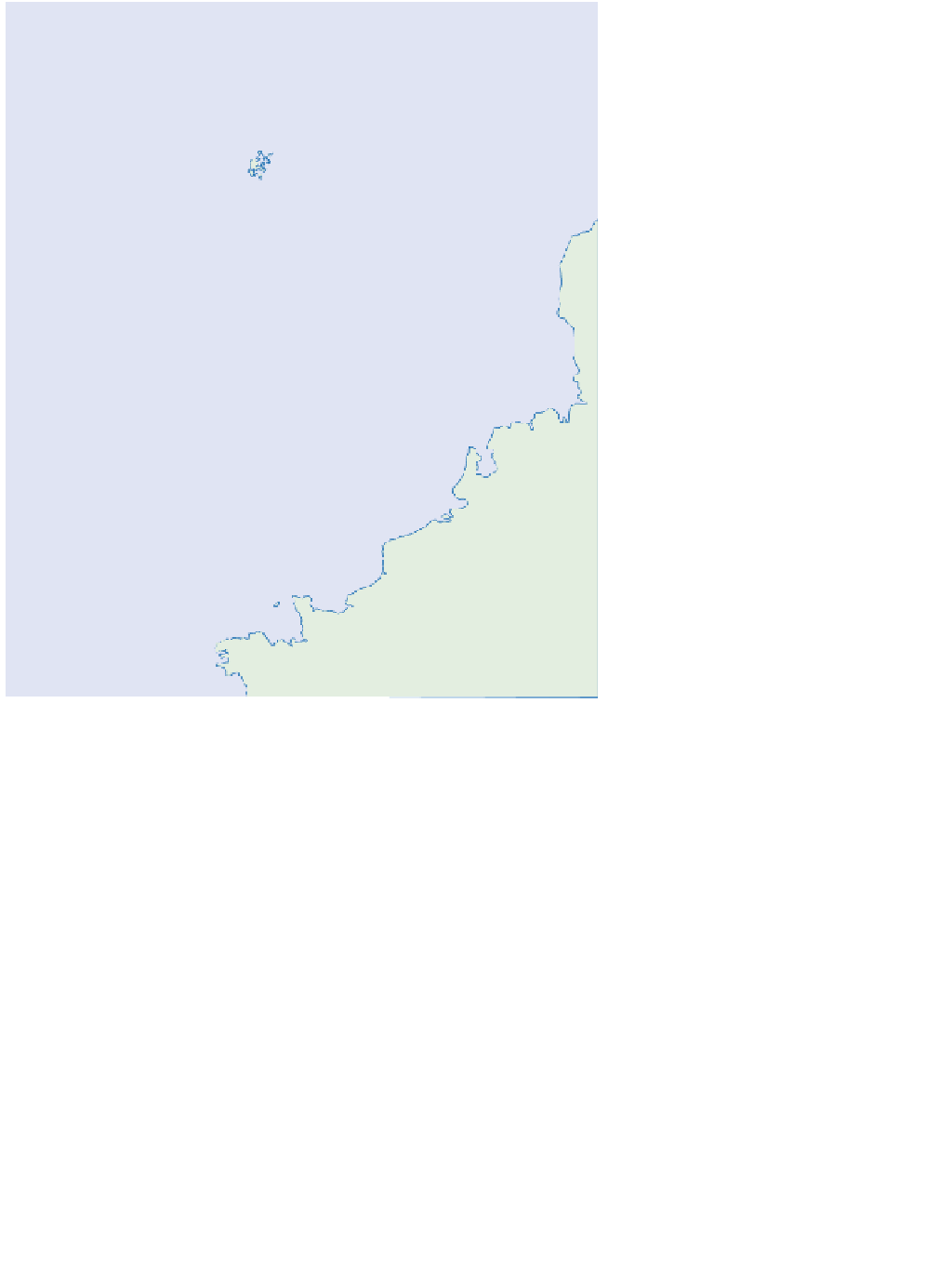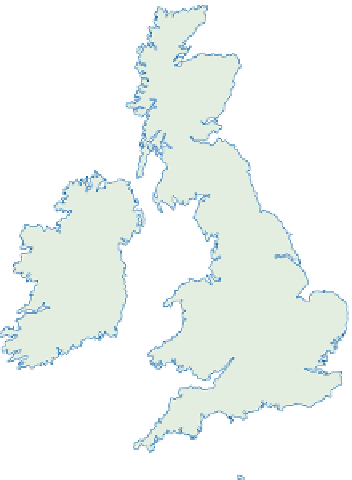Geoscience Reference
In-Depth Information
Figure 17.6
Coastal sediment movement
around the British Isles,
showing directions of net
transfer.
Source: After Stride (1982)
Continental
shelf edge
Bed-load parting
Net sand transport directions
Dominantly tidal
Dominantly non-tidal
Local direction on shelf edge banks
Net direction unknown
0
200
km
structural control of cliff form and the geometry of bays
and headlands (
Plate 17.2
).
Similar hydraulic forces
accelerate erosion when waves attack coastlines in
unconsolidated materials. Soft glacial sediments form
many mid- to high-latitude coastlines and changing
dynamics may convert formerly constructive or stable
coasts into easy erosion targets. Corrasion and attrition
result from the abrasive action of suspended and bed
loads in wave and current environments. Corrasion of
bedrock or other fixed surfaces is probably restricted
to the nearshore, and the backshore zone within reach of
wave spray. Attrition occurs as in any other environment
with loose particles in regular, moving contact with each
other. Beach shingle acquires among the highest mean
clast roundness.
the intertidal zone and on the presence of salts. The
intertidal zone and adjacent areas within reach of sea
spray form a zone of extremes. Inundation, anaerobic
conditions and wetting at high tide are replaced by
uncovered surfaces exposed to bleaching, air flow and
drying at low tide. This leads to
water-layer weathering
by slaking, hydration and salt weathering (see
Chapter 13).
Rocks must be permeable to water and spray for this to
occur, and optimum conditions are found in permeable
substrates on tropical coasts with diurnal tides. Carbonate
solution is surprisingly active, especially in the tropics,
where sea water often becomes saturated with dissolved
carbonates (
Plate 17.3
).
Biochemical weathering assists by
CO
2
respiration in rock pools and through marine boring
animals and leachates from algae and marine plants.
Coastal weathering
Sediment transport and deposition
Sub-aerial weathering processes assist coastal erosion by
their progressive reduction of material strength. Particular
emphasis is placed on wetting and drying cycles around
Sediment transfers and deposition are major processes in
continuously moving coastal waters and account for the
greater proportion of landforms. Their principal sources



















































































































































































































































































